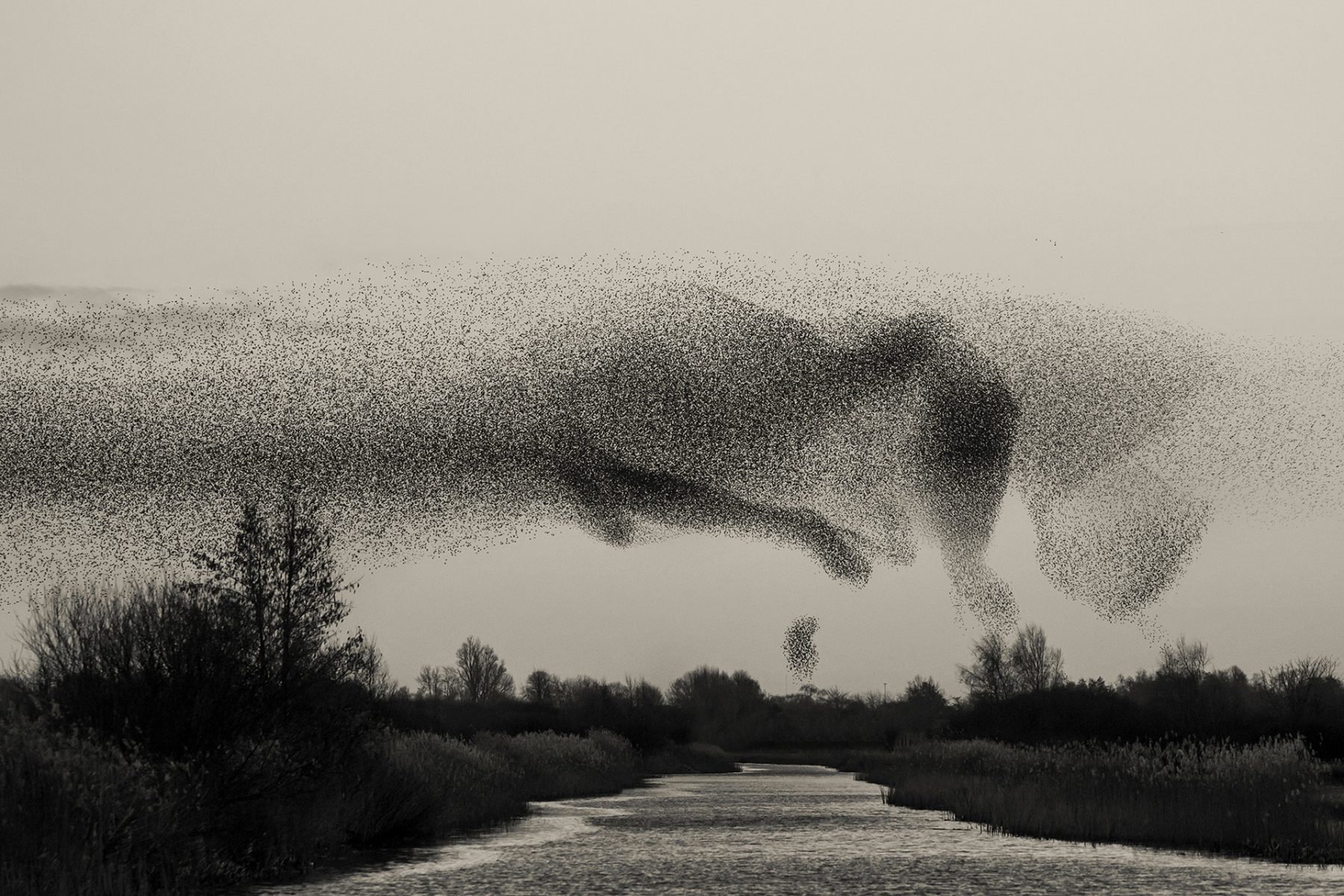Black Sun — A Conversation with Søren Solkær13.05.2021
Nearly three decades into a prolific photography career, Søren Solkær has become known for his portraits of musicians such Björk, David Lynch, Amy Winehouse, Pharrell Williams and Patti Smith, to name a few.
With an established career in the books, in 2017 he embarked on his BLACK SUN project — a series of photographs and video capturing the phenomena of thousands of starlings in flight during their migration cycle. This dramatic choreography of nature creates breathtaking visuals that few people ever see. We recently had the opportunity to speak to Søren about his career as a photographer and the genesis of BLACK SUN.

Can you tell us about where you grew up and your path to becoming a photographer?
After high school, I went travelling for 18 months. Despite a very tight travel budget, I bought my first SLR camera and had to live on rice and bananas for a while. The camera became my key to meeting the world. I would explore places that I wouldn’t have had the guts to enter and approach strangers that my young shy self wouldn’t have dared to confront without a camera around my neck.
After my first travels, I studied Nordic literature for a couple of years. I then went travelling for another year. This time photography was my main focus. Upon my return to Denmark, I applied to FAMU, the Photo-and Film-Academy in Prague, where I studied photography for a couple of years in the mid-nineties. I then moved to Copenhagen and started doing personal art projects. I bumped into a friend from my home town who had become a well-known musician on the Danish music scene, Sune Rose Wagner of The Raveonettes. We started collaborating on his band’s photographs, and soon after I started to establish myself as a music photographer, first in Copenhagen and later in London. For the 25 years that have followed, I have been doing commercial work in the music, fashion and creative industry alongside producing my personal projects, exhibitions and books.
Was creativity part of your childhood?
Not really from an early age. I grew up as the son of a school teacher and a bookshop manager. A house filled with books. We were surrounded by nature. Birdwatching and fishing were my two biggest passions as a kid. Later came a strong interest in music and in the early eighties, when hip hop made it to Europe, I had a strong interest in breakdancing and graffiti. My crew was called The Bronx Breakers. Three skinny white boys in bright yellow tracksuits in the Danish countryside.
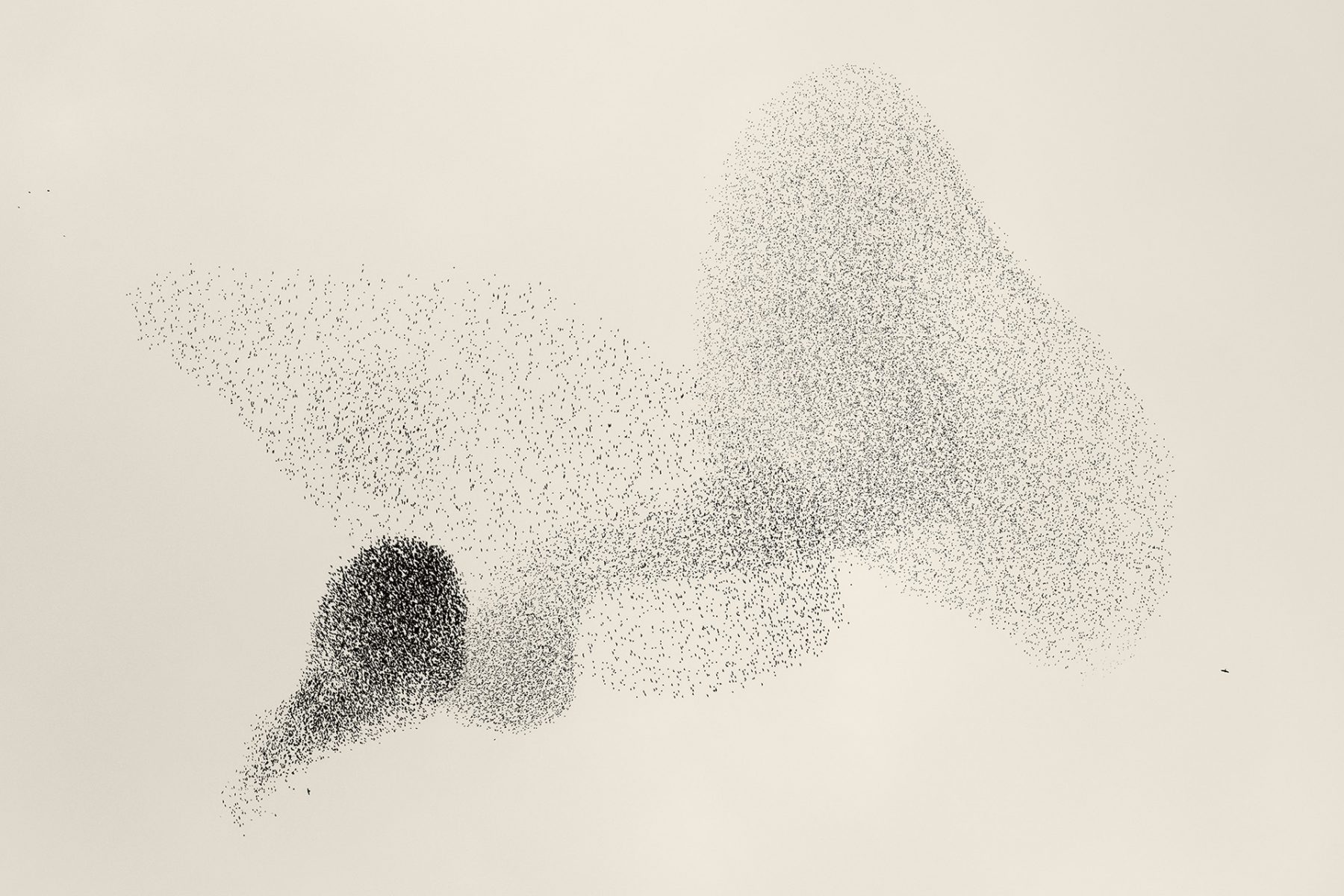
Your portfolio over the years is quite diverse, from portraits to music to the BLACK SUN project. Is it challenging to continue to diversify your style?
I have never tried to diversify my projects. They all spring from different interests or subjects I was preoccupied with as a child and feel an urge to investigate as an adult. It allows me to go in-depth with anything that resonates with me at a given time.
Can you tell us about the BLACK SUN project, and how that came to be?
In 2017 I was working on a 25-year retrospective portrait book and exhibition at Frederiksborg Castle. I was going through all my portraits for a year and decided that I wanted to do a new project that was not about portraiture.
The first thing that came to my mind was an image of a big flock of starlings I had seen flying in intriguing formations as a ten-year-old. I decided to go to the Wadden Sea on the Danish West Coast where starling murmurations take place in spring and fall. Initially, it was all about practicalities like locating the birds and learning about their behaviour. On the seventh night I was there I witnessed a large flock of starlings getting attacked by a peregrine falcon. The shapes and formations the flock created, to scare off the attacking bird of prey, blew my mind. Beautiful, dramatic and resembling a Japanese ink drawing or a piece of calligraphy.
For the next two years, I spent time my time in that area whenever the birds were there. After the second year, I started following the birds as they migrated south and west and thus expanded the project to five other countries: Germany, The Netherlands, Italy, Spain and the UK.

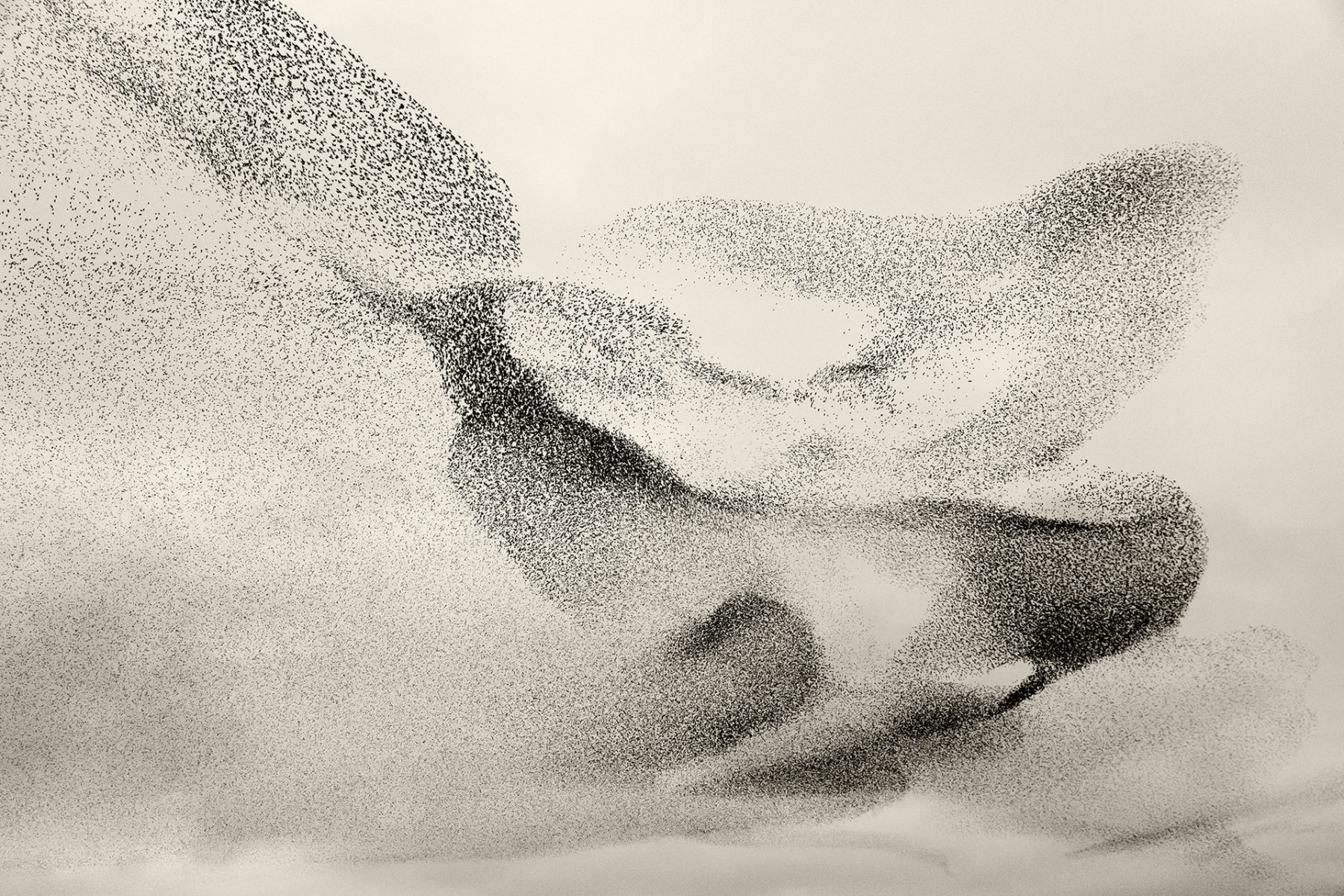
How has Denmark influenced your creativity or style?
Growing up in nature in a remote part of the country has given me an appreciation for spending time in nature. Having lived most of my adult life in Copenhagen has played a big part in how I perceive art. I have been lucky to be part of a great artist community where I have experienced the development of craft and personal expression in a lot of my contemporaries.
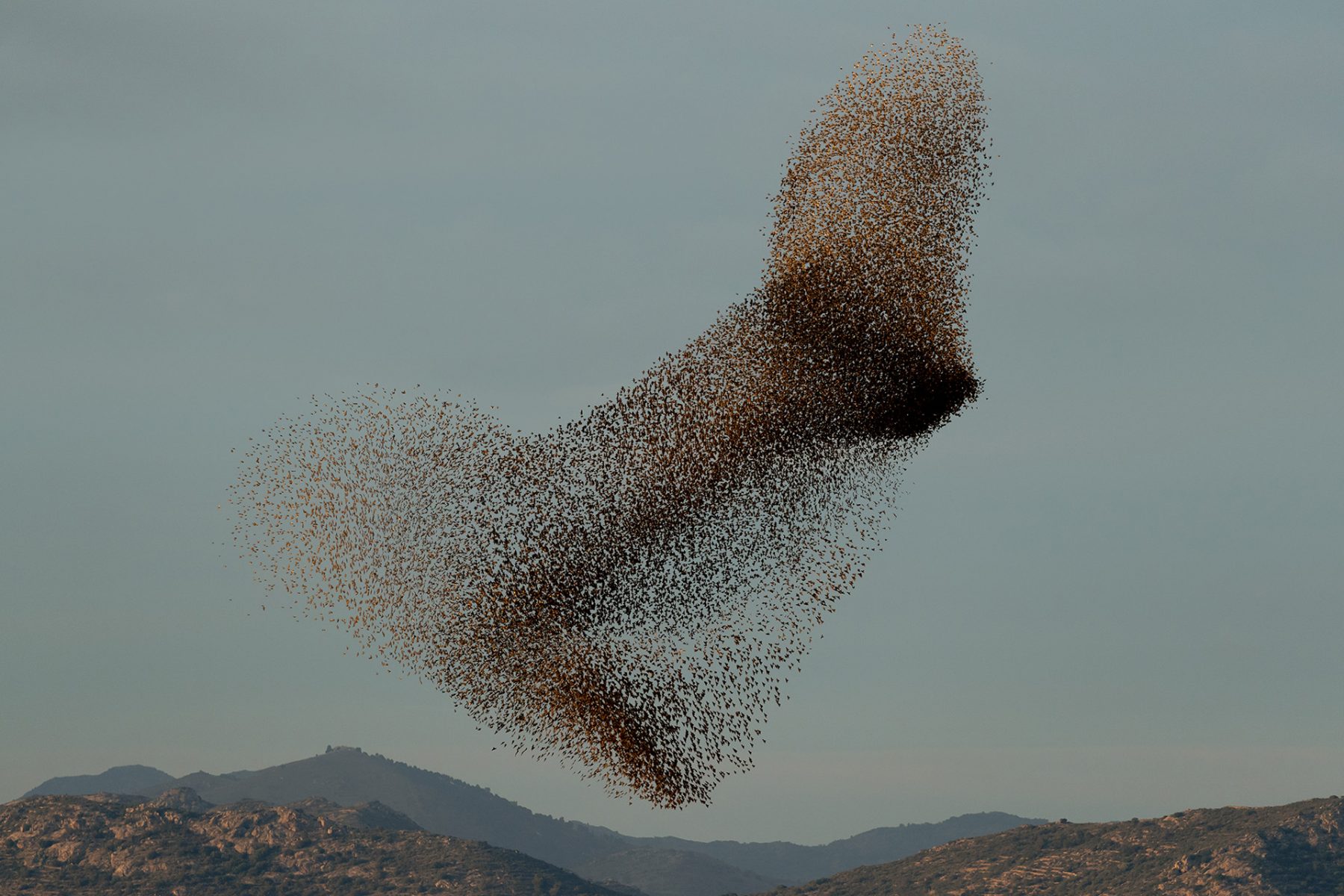
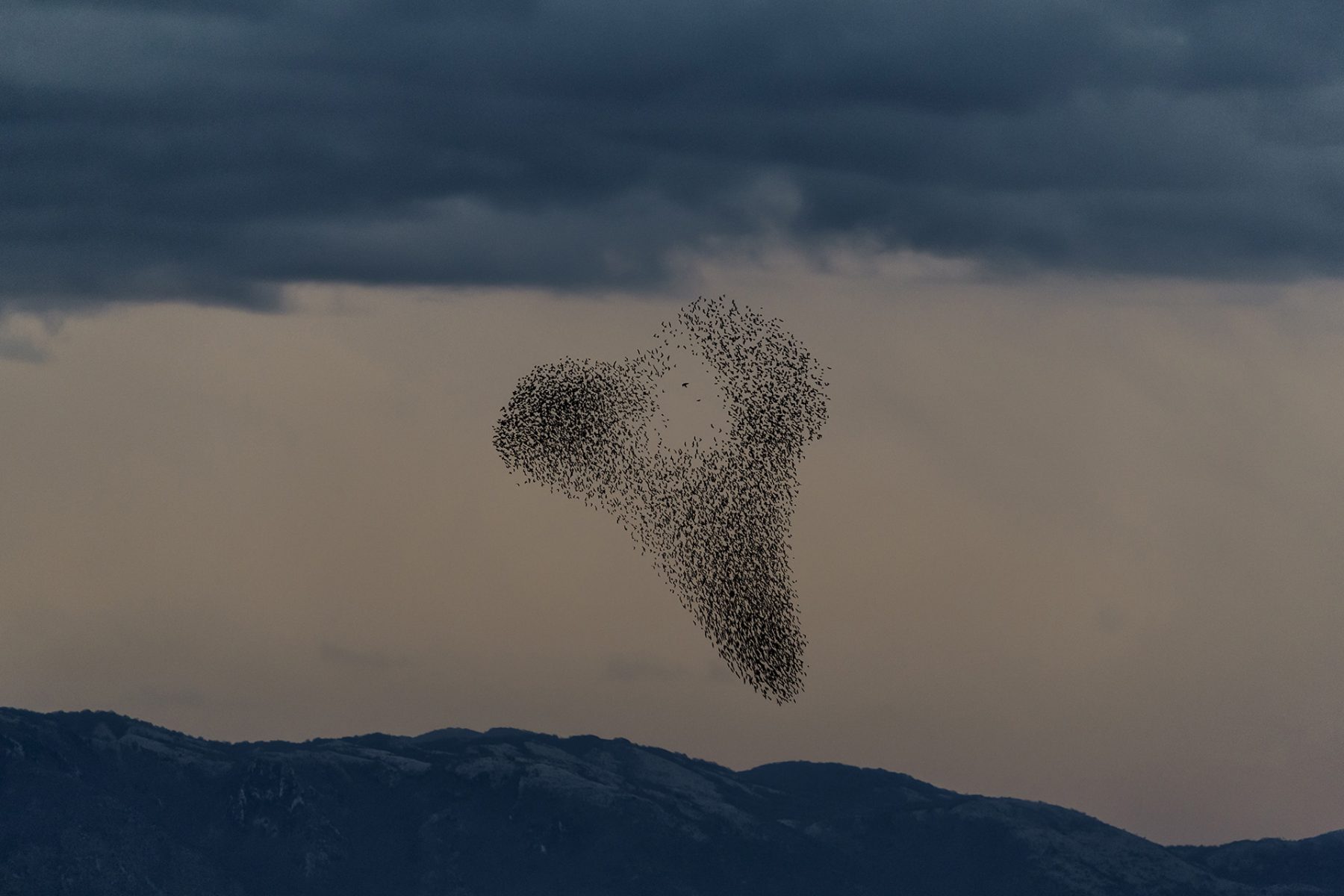
Do you feel a special relationship with the landscape or the starlings?
I feel a strong connection to the graphic barren landscape I grew up with. The more time I spend with starlings, the more I admire their navigation and collaboration skills. I feel like the shapes they create are a form of language or communication.
I was relieved when I recently read that the ancient Romans placed an oracle on the Aventine Hill to interpret the shapes of the starling flocks. They believed the Divine was speaking to them through the birds. I am not alone with my awe and fascination.
What do you want people to think when they look at your work?
I believe that the shapes and patterns of the starling flocks are universal expressions. I hope that people feel a deeper recognition in the images and a connection to nature and the universe.
